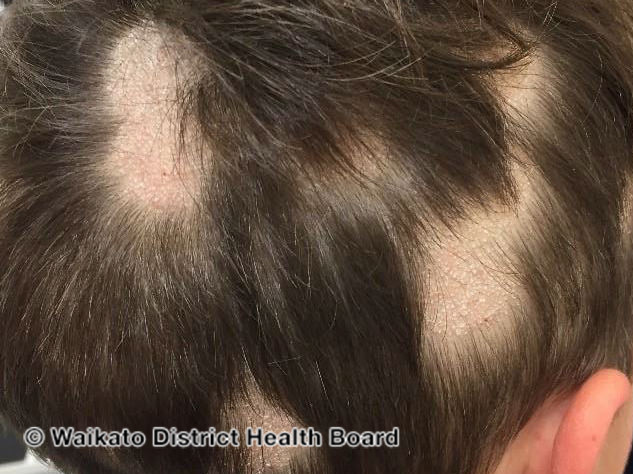Tinea Capitis
One of a number of fungal skin infections that commonly affects children, Tinea Capitas is the name of a condition also known as scalp ringworm.
During this condition, the scalp becomes infected with dermatophyte fungus. This type of fungus grows on surfaces such as skin, hair and nails, and causes ringworm and other diseases. Tinea Capitas can be caused by a number of zoophilic fungi, often originated from animals such as cats, cattle, pigs and horses.


Tinea capitas or scalp ringworm commonly affects children aged between 3 and 7

Symptoms include scaling and black dots on the scalp

The Dermatologist may take a skin scraping to examine under a microscope

Treatment with antifungal medicines can take four to six weeks to resolve the condition
What causes Tinea Capitis?
Who is at risk of Tinea Capitis?
What are the symptoms of Tinea Capitis?
A few of the symptoms associated with this type of infection include scaling that can dandruff-like residue, and black dots appearing on the scalp where the hair has been scaled away.
A kerion may form, which is an abscess caused by fungal skin infections. Favus is name given to tinea capitis in it’s most severe stage, and is characterized by yellow crusts appearing in the hair. If left untreated, both of these symptoms can result in permanent scarring and hair loss/bald spots.
Images of Tinea Capitis
These images are kindly provided by DermNetNZ.org for non-commercial use, for the purpose of education and information. The images have not been modified and DermNetNZ do not endorse The London Skin and Hair Clinic. You can find a copy of the license at http://creativecommons.org/licenses/by-nc-nd/3.0/nz/.
How does a Dermatologist diagnose Tinea Capitis?
Symptoms such as scarring, scaling and bald patches may lead a dermatologist to suspect Tinea Capitis.
To confirm a diagnosis, a dermatologist may scape skin from the affected area along with hair removed at the roots, and examine them under a microscope. In more serious cases, a skin biopsy may be performed.
How does a Dermatologist treat Tinea Capitis?
Antifungal medicines are prescribed to treat Tinea Capitis, with successful treatment normally curing the condition with four to six weeks. If a kerion is present and it has become infected and swollen, a dermatologist may also prescribe further medicines to alleviate pain and reduce the inflammation.


